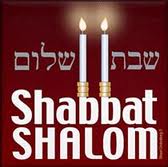The Shabbat is one of the most important celebrations for the Torah observant Hebrew and yet we have so many different understandings on when and how to keep it. There are those that keep Shabbat from sixth night (erev shabbat - Friday evening) until sunset seventh night (Saturday evening) and others that keep Shabbat on seventh day (Saturday) from sunrise to sunset and even those that call the first day (Sunday) the Shabbat. How could such an important command be so difficult to observe the way our Sovereign desires. We have come to understand that this topic is yet another misconception that we learned from those that should have kept the Torah alive in the earth.
Excerpt from RABBINICAL ESSAYS BY JACOB Z. LAUTERBACH HEBREW UNION COLLEGE PRESS CINCINNATI
Before we proceed to describe the ceremonies of the entrance of the Shabbat we must ascertain the exact time of its appearance, that is, at what time of the day the arrival of the Shabbat was expected. This will help us to understand better certain features in the arrangements for welcoming it. As the Shabbat is the seventh day of the week and extends over one whole day, a brief discussion of the development of the Jewish system of reckoning the day is necessary to determine the time of the coming in and the going out of the Shabbbat. There can be no doubt that in pre-exilic times the Israelites reckoned the day from morning to morning. The day began with the dawn and closed with the end of the night following it, i.e, with the last moment before the dawn of the next morning. The very description of the extent of the day in the biblical account of creation as given in Gen 1.5 presupposes such a system of reckoning the day, for it says: "And it was evening and it was morning, one day." This passage was misunderstood by the Talmud.
Ancient, medieval, and modern commentators on the Bible disagree over the meaning of Genesis 1:5: . . . there was evening and there was morning, one day.
Shmuel ben Meir (c.1085 - c.1158), also known as Rashbam learned from his grandfather Rashi. Rashbam was a biblical commentator and Talmudist with his commentary on the Torah renowned for its stress on the plain meaning (peshat) of the text.
Here is his commentary on Genesis (bold emphasis mine)
Rashbam's Genesis
1. To remind the Jewish people of the reason for the observance of the Shabbat as described in the Ten Commandments, Moses told the story of creation: At the time when the upper heavens and the earth had already been created, a long or a short time before the acts related in Genesis,2. the earth as we know it was completely empty, for water covered it up to the upper heavens. Darkness that was not night was over the depths, and there was no light in the heavens. A wind blew across the waters.3. Elohim said, "Let there be light" to correct the lack of light, and there was light.4. Elohim looked at the light and saw that it was beautiful. Elohim divided the light into a unit of twelve hours and the darkness into a unit of twelve hours.5. Elohim named the newly-formed unit of twelve hours of light "day" and the newly-formed unit of twelve hours of darkness "night," and they have been so called ever since, day always precedes night. Daylight turned to evening as its light faded; then, morning broke as the morning star signaled the end of night. The first of the six days of creation referred to in the Ten Commandments was, thus, completed and the second day began.6. Elohim said, "Let there be an expanse in the middle of the waters which reach fromthe surface of the earth up to the upper heavens to divide the waters in half."7. Elohim made the expanse and divided the waters below the expanse from the waters above the expanse; and it has been so ever since.8. Elohim named the expanse "heaven" and it has been so called ever since. Daylight turned to evening as its light faded; then, morning broke as the morning star signaled the end of night. The second of the six days of creation referred to in the Ten Commandments was, thus, completed and the third day began.verse 1414. Elohim said, "Let there be bodies of light in the expanse which is below the upper heavens to signal the actual division of day from night, which is sunset and the appearance of the stars, and night from day, which is sunrise. Let them also be used to indicate miraculous signs, to calculate the holidays and the calendar, to mark the beginning and end of day and night, and to delineate the four seasons of the year.15. Let them also be bodies of light in the expanse which is below the upper heavens to be a source of light for the earth"; and it has been so ever since.
16. Elohim made the two large bodies of light, the larger to rule the day and the smaller to rule the night, the stars.17. Elohim put them in the heaven which is below the upper heavens to give light to the earth,18. to rule during the day and the night, and to signal the beginning of day with the rising of the sun and the beginning of night with the setting of the sun and the appearance of the stars. Elohim looked at the heavenly bodies and saw that they were beautiful.
As we can see from these passages, the ETERNAL created during the day-light hours, when work is to be completed, and rested in the evening. There is a progression from Morning - afternoon - evening - nightfall and then back to morning. A Complete Day.




